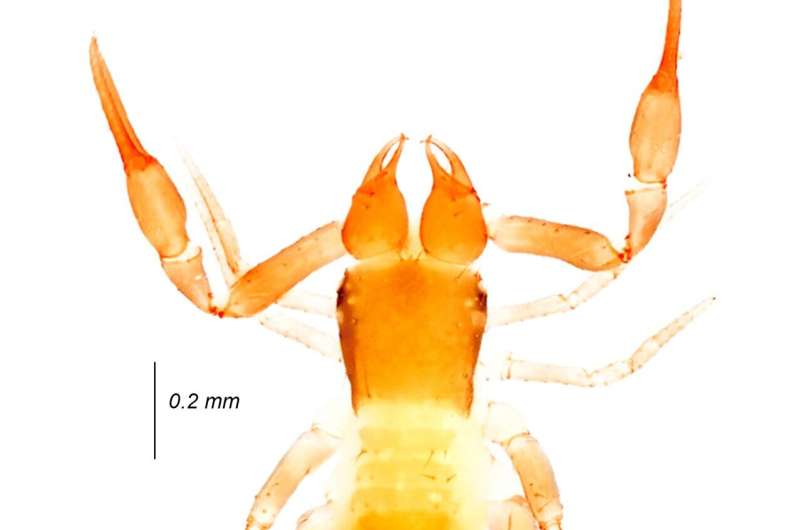Tracing ancient lineages of pseudoscorpions in the tropical forests of Western India

The tropical forests of the Western Ghats, a vast mountain range in Western India, are home to many diverse species, especially endemic ones. In a recent study, published in the journal Molecular Phylogenetics and Evolution, researchers at the LIB have for the first time analyzed the distribution of pseudoscorpions (an arachnid group) in this region in the light of geo-climatic fluctuations and continental drift, providing evidence of ancient species lineages.
The study provides the first historical biogeographical analysis of pseudoscorpions in the Western Ghats mountain range of India and provides fundamental information on the diversification of soil arthropods in this biodiversity hotspot. In doing so, the study confirms that these tropical forests served as important refugia for many species during climatic fluctuations and across different extinction periods. The analyses also underscore the importance of the Western Ghats forests as evolutionary "museums" harboring ancient lineages and the montane forests as "species pump" apparently promoting generations of new species.
Although this biodiversity hotspot has been subjected to a multitude of phylogenetic studies in the past, with most focusing on "flagship" species such as the vertebrates, the processes affecting diversity patterns of the invertebrate fauna are poorly understood. The study of pseudoscorpions is particularly interesting because these arthropods are unlikely to disperse over large distances due to their poor adaptability to changes in humidity and temperature, while new species tend to evolve in different microhabitats.
Most pseudoscorpion species from India were described up to more than half a century ago and no major studies have been conducted since then. "Nothing is known about the biology and ecology of any of the species here," states Jithin Johnson, Doctoral Candidate at the LIB and first author of the study. "This prevented an evaluation of their ecological role in soil and leaf litter habitats."
Hitherto, only fewer than 20 species were known from the Western Ghats of India, but the current study has itself identified more than 20 candidate new species from the region. Johnson says that "this shows how underestimated the diversity in the region is. Further, the study helped in identifying areas of high diversity and endemism (both genetic and species) as well as climatic and geological stability (e.g. refugia), which would help in prioritizing conservation strategies for pseudoscorpions, and invertebrate fauna, in general."
In this study, the researchers focus exemplarily on the evolutionary history of an ancient and widespread group of pseudoscorpions (tribe Tyrannochthoniini) in the Western Ghats and present the first dated phylogeny of the group. To do so, they draw on a variety of biogeographical and diversification analyses based on the pseudoscorpions from the tropical forests of India and also from Africa, East and Southeast Asia, Australasia, and the Neotropics. They demonstrate how ancient species lineages persisted despite drastic climatic changes in the Late Cretaceous, and how continental drift caused lineages to separate. According to the study, some pseudoscorpion families found in the Western Ghats show clear patterns reminiscent of continental drift.
Their findings suggests that Tyrannochthoniini pseudoscorpions originated on Gondwana, a palaeocontinent that dominated the southern hemisphere in early times of Earth's history. Later, the species lineages were separated with the detachment of India from Africa during the Jurassic period, and the Western Ghats species started diversifying on the drifting Indian plate.
More information: Jithin Johnson et al, Biogeographical and diversification analyses of Indian pseudoscorpions reveal the Western Ghats as museums of ancient biodiversity, Molecular Phylogenetics and Evolution (2022). DOI: 10.1016/j.ympev.2022.107495
Journal information: Molecular Phylogenetics and Evolution
Provided by Leibniz-Institut zur Analyse des Biodiversitätswandels



















